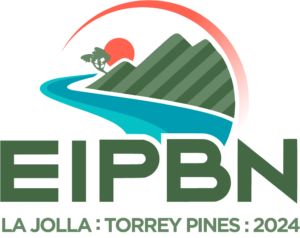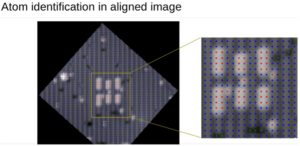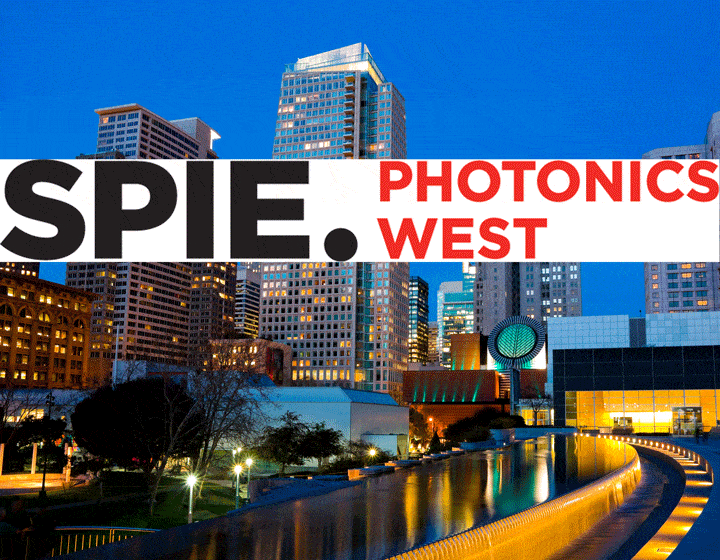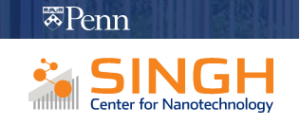Events
On September 17, James Owen presented a talk at MNE 2024 entitled, “Breaking Tennant’s Law with Ultra-high Speed Atomic Precision Lithography“. His co-authors included Joshua B. Ballard, Ehud Fuchs, and John N. Randall (all from Zyvex Labs). The talk covered the limitations of existing lithography technology, such as EUV and E-beam lithography, and how the industry might move forward using a new technology: nanoimprint lithography.

On May 29, James Owen gave a talk at EIPBN 2024 entitled, “Next generation fabrication techniques for top gated qubits in silicon“. His co-authors included Joshua B. Ballard, Ehud Fuchs, John N. Randall from Zyvex Labs, Felix Beaudoin from Nanoacademic Technologies Inc, and Anthony J. Sigillito from the University of Pennsylvania. The talk described two methods of creating atomically-precise (or near atomically-precise) quantum computer architectures using scanning tunneling microscope lithography (STM). In one method, the patterns were functionalized into 2D delta layers. In the other method, the STM patterns were converted into nanoimprint templates for scalability.
In January of 2024, James Owen gave a talk at SPIE entitled, “Atomically Precise Advanced Manufacturing for 2D Bipolar Devices“. His co-authors included Robin Santini, Moutaz Haq, Ehud Fuchs, and John N. Randall from Zyvex Labs, and Richa Mishra and Reza Moheimani from the University of Texas at Dallas. The talk described the process for fabrication of bipolar dopant-based devices, such as p-n junctions and n-p-n bipolar junction transistors, which may have a number of advantages (such as improved gain-bandwidth product and low-noise operation). The overall process described has become known as Atomically Precise Advanced Manufacturing (APAM), which offers far better patterning precision than conventional techniques such as e-beam lithography.
On June 2, James Owen presented a talk at EIPBN 2023 entitled, “APAM 2D bipolar device fabrication“. His co-authors included Robert Santini, Ehud Fuchs, and John N. Randall (all from Zyvex Labs). The talk discussed the development of sample designs and patterning technology to improve the precision and throughput of atomic-scale STM lithography.
Annual Meeting of the University of Pennsylvania’s SINGH Center for Nanotechnology was held on Oct. 21, 2021. John Randall gave the keynote lecture entitled “Digital – Atomically Precise Manufacturing”. Zyvex Labs Sponsored a Quantum Joke contest which was open only to Students and Post-Docs who attended the event.
A blue-ribbon panel of Nanofabricators selected the winner which was the one that Gautam Jain entered. Gautam received a cash award as the winner of the contest.
Below are the 14 entries.
- Rachael Keneipp
- Did you hear what happened to Schrödinger’s Cat? They say it was playing with a ball of yarn and it got all ENTANGLED!
- Christopher Johnson
- Q: What sound does a subatomic duck make?
- A: Quark! Quark!
- Adam Goad
- What’s an alternative title to the Matt Damon blockbuster where intelligence experts try to pinpoint his location? The Bourne Rule
- Tzu-Yung Huang
- Is the state of the Quantum Pun Contest open or closed? We don’t know, but let’s probe the system by submitting a joke!
- Raj Patel
- What do you call it when you are nervous about one tiny thing? Quantum uncertainty.
- Gautam Jain (Winner)
- I didn’t know I was a quantum physicist. I thought I’ll change the outcome of my exam by observing it!
- Sharan Deepak Menon
- What happens when you cross a Civil Engineer and a Quantum Physicist? They start building houses Planck by Planck!
- Henry Shulevitz
- Why did the quantum Titanic sink? They couldn’t detect the Heisen-iceberg
- Atul Dhall
- A jealous electron to a defiant, carefree photon: “You can’t just spin something out of nothing. You need some mass. Your arguments need some substance. How do you live with yourself and your misunderstood reality?” Photon whizzing past: “See you later. I don’t have time for this.”
- Alexandre Foucher
- Why are quantum computers terrible community leaders? Because you are never sure what values they hold.
- Jordan Gusdorff
- Why was the quantum physicist on Grindr? He was looking for Feyn-man.
- Paria Gharavi
- What does the quantum duck say? Quark Quark
- Rebecca Fishman
- Why did John Cena go to the Quantum restaurant? Because he could smell what Dirac was cooking.
- Mathieu Ouellet
- What does a Singh center user and Trump have in common? They are both orange and like fabrication.

On August 12, John Randall gave a plenary lecture at Oak Ridge National Laboratory’s 2021 Joint Nanoscience and Neutron Science User Meeting. The talk was entitled: “Digital Atomic Scale Fabrication – A promising path to Atomically Precise Manufacturing” John’s co-authors included James H.G. Owen and Udi Fuchs. The talk described Zyvex’s efforts at developing Hydrogen Depassivation Lithography as a digital atomic-scale fabrication device and how this and other technologies would pave the path to Atomically Precise Manufacturing and eventually a new exponential manufacturing trend that would achieve APM at the nanoscale and then maintain that precision as the product sizes were scaled up. This could be considered an Inverse Moore’s Law.
On June 1, John Randall presented a talk at the EIPBN 2021 Virtual Conference entitled “Progress Toward 2D Nano Bipolar Junction Transistors”. His co-authors included: J.H.G. Owen, E. Fuchs, and R. Santini all from Zyvex Labs, and Nupur Navlakha – University of Texas at Austin. The talk described recent progress to develop nanoscale bipolar junction transistors (BJTs) using Hydrogen Depassivation Lithography to create 2D delta doped layers of donor (P) and acceptor (B) dopants in a single buried (100) plane of Si. The fabrication included degenerative implanted regions to allow easy ohmic contacts with the delta doped layers. The 2D nanoscale BJTs potentially have very reproducible and extremely high gain-bandwidth performance, cryogenic operation, rad hardness and low noise.
John Randall presented Virtually (if not virtuously) at the 2021 March Meeting of the APS. He was also part of the Division of Quantum Information (DQI) programming committee along with Michelle Simmons and Joris Keizer of the University of New South Wales and Richard Silver of NIST. John’s Talk was entitled “Digital Hydrogen Depassivation Lithography for Improving Precision of Donor Placement in Si” and his co-authors were James H.G. Owen, Ehud Fuchs, Moutaz Haq, and Robin Santini all from Zyvex Labs. The talk presented a new strategy for exposing 4 atom pixels (2 dimers along a dimer row) with a single current pulse from the tip. This has the advantages of providing a greater tip position tolerance, an opportunity to keep better alignment with the Si lattice and verifying that all H atoms are removed from the pixel.
In March, 2021, Udi Fuchs presented a talk at Photonics West entitled “Identifying surface elements in STM images using Neural Networks”. The work is funded by the DOE and is a collaboration between zyvex Labs and Oak Ridge National Laboratories. The work is intended to use machine learning to provide identification of key features in STM images: atomic step edges, H-passivated Si atoms, clean Si atoms, Si atom vacancies, and defects to be identified so that Hydrogen Depassivation Lithography can be automated. This is a productivity boost for single tip STM systems and an absolute necessity for highly parallel arrays of STM tips doing patterning.
On January 14, 2021, John Randall presented at the Oregon State University and Washington University Nano Engineered Systems Seminar Series. His co authors were James H.G. Owen, Ehud Fuchs, Rahul Saini, Robin Santini, Moutaz Haq, and Bill Owen – Zyvex Labs, and Reza Moheimani – UT Dallas. His talk was entitled: “Digital Atomic-Scale Fabrication: A new approach to Atomically Precise Manufacturing (Quantum Devices)”.
UTD Workshop “Atomically Precise Fabrication of Solid-State Quantum Devices”
20-21 March 2020 at UT Dallas, Dallas, TX
The workshop on Atomically precise fabrication of solid-state devices will run March 20-21, 2020, at the Erik Jonsson School of Engineering, University of Texas at Dallas. The workshop will be preceded by a one-day tutorial workshop on quantum control, presented by Professor Ian Petersen.
https://engineering.utdallas.edu/quantum-workshop/index.html
ORNL Workshop “Atom by atom fabrication with electron beams and scanning probes”
1-2 November 2018 at Oak Ridge National Laboratory, Oak Ridge, TN
The workshop will comprise a 1.5 day lecture part given by researchers active in the field. This will consist of plenary lectures that introduce the key areas of interest, contributed talks and posters, and the demonstration of Center for Nanophase Materials Sciences (CNMS) facilities. John Randall will be attending and speaking at the Workshop. This is an important step in community building for the Atomic Scale Fabrication community. See John Randall’s blog on this subject HERE.
The registration for the workshop is available HERE.
25-26 April 2018 at NIST, Gaithersburg, MD.
Dopant atoms placed with atomic precision into tunable arrays using scanning tunneling microscopy can be made to display electronic and photonic properties across a wide range of structures for 2D quantum metamaterials. The workshop will explore useful commonalities between fabrication, theoretical prediction, and alternative approaches to tunable quantum materials, including cold-atom realizations.
Click here for more details Download Workshop Flyer
National Nanomanufacturing Network Workshop
30-31 October 2017
John will be attending and speaking at the Workshop mentioned in the document (linked below) describing Zyvex Labs approach of Digital Atomic scale Fabrication.
MRS Webinar on Single Atom Fabrication with Beams and Probes
27 September 2017, 11:00 am – 12:30 pm
Josh Ballard, Director of APM at Zyvex Labs presented a webinar on Scanning Tunneling Microscopy-based Fabrication
The two current reigning paradigms enabling nanotechnology are scanning probe microscopy and molecular machine devices. Presently, the nanoscience and nanotechnology communities are seeing the emergence of a third paradigm—the use of the atomically focused beam of a scanning transmission electron microscope (STEM) to control and direct matter on the atomic scale. The September issue of MRS Bulletin presents advances in electron- and ion-beam-based atomic fabrication on surfaces, in layered materials, and in three dimensions. The talks in this webinar expand upon the articles in the September MRS Bulletin issue.
http://www.mrs.org/single-atom-fabrication-webinar
September 8, 2017 at UT Dallas.
- the binary events are the making and breaking of chemical bonds,
- there is some tolerance in the process that makes or breaks chemical bonds,
- there is a spatial digital address grid which is a crystal lattice,
- the output of a digital process can be the input for another digital process
- there are error detection and correction processes
July 19, 2017 at University of Illinois at Urbana-Champaign
http://www.ece.illinois.edu/newsroom/article/23366
Apr 21, 2017 at University of Texas at Austin
Dr. John Randall, President, Zyvex Labs will give a Seminar at the Microelectronics and Engineering Research Center at the University of Texas. The Seminar entitled “The Next Digital Revolution – Digital Atomic Scale Manufacturing” will be given Friday, April 21, 2017, at 3:30 PM CDT at MER 160, Room 2.114, 10100 Burnet Road, Austin TX 78758. This is part of a Seminar Series held by the National Science Foundation’s Engineering Research Center. This NSF Nanosystems ERC entitled Nanomanufacturing Systems for mobile Computing and Energy Technologies (NASCENT http://nascent-erc.org) is a partnership between The University of Texas at Austin, The University of New Mexico, The University of California at Berkeley, Indian Institute of Science, and Seoul National University. Zyvex Labs is an Industrial Partner of NASCENT and Dr. Randall is co-Chair of the Industrial Advisory Board.
Feb 7, 2017 at Molecular Foundry, Berkeley California
John N. Randall, President of Zyvex Labs, will speak on February 7, 2017 at 11AM, as part of the Molecular Foundry’s Winter Seminar Series at the Lawrence Berkeley National Laboratory in Berkeley California. Invitations go to a very limited number of important scientists to give a seminar to the Molecular Foundry community. The title of his talk will be: “Digital Atomic Scale Fabrication and the Path to Manufacturing”. The Molecular Foundry is One of the World’s Premier Nanoscience Research Institutions. Supported by the Department of Energy Office of Basic Energy Sciences (BES) through their Nanoscale Science Research Center (NSRC) program, the Molecular Foundry is a national User Facility for nanoscale science serving hundreds of academic, industrial and government scientists around the world each year.
This is a free event. Anyone wishing to attend should contact Tina McCoy <tmccoy@lbl.gov> Phone: 510-486-7423
Conferences
We attend many scientific conferences each year to present our work and keep up with the advances in our fields of research. In particular, we follow research in other methods of nano fabrication and atomic-scale patterning and fabrication methods for quantum computers.
Regular Annual Attendance
Electron Ion Photon Beam Nanofabrication
Owen EIPBN 2018 Abstract Owen EIPBN 2017 Abstract Owen EIPBN 2016 Abstract Schmucker EIPBN 2016 AbstractWe run a micrograph contest every year at the EIPBN conference. The website showing entries each year can be found here.
Micro Nano Engineering conference
MNE 2018 Abstract MNE 2016 AbstractWe run a micrograph contest every year at the MNE conference. The website showing entries each year can be found here.
Si Quibit 2017 Abstract Si Qubit 2016 Abstract Si Qubit 2015 Abstract
Occasional Attendance
46th Conference on the Physics and Chemistry of Surfaces and Interfaces (PCSI-46)
PCSI-46 2018 AbstractArea Selective Deposition Workshop
ASD 2018 Abstract ASD 2017 PosterMaterials Research Society Fall Meeting 2016
MRS 2016 AbstractMaterials Research Society Spring Meeting 2018
MRS Spring 2018 AbstractUK QIP workshop, Cambridge, Sept. 2015
UK QIP 2015 AbstractICNT 2016 Abstract
Physical Electronics Conference
PEC 2018 AbstractMolecular Foundry User Meeting
Molecular Foundry 2018 Abstract




